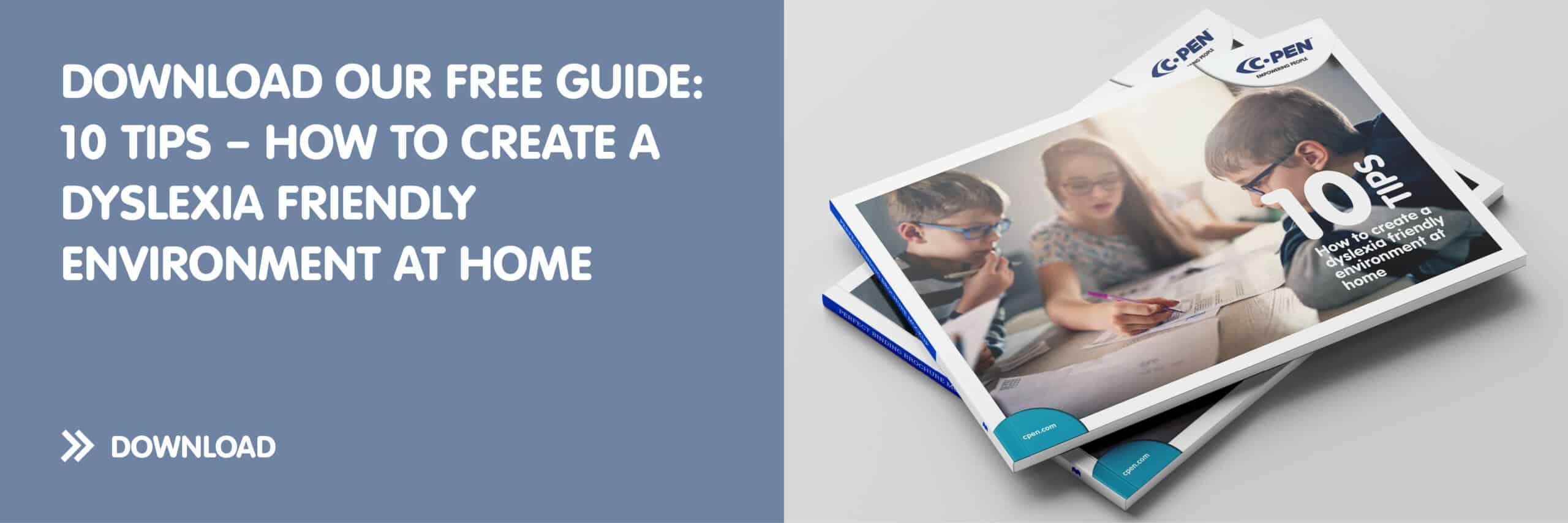
Understanding dyslexia – early identification and support
Discovering dyslexia at an early age is challenging since the signs among young children are often vague and hard to notice. However, there is excellent gain in identifying the condition early on. It not only facilitates your child’s everyday life but also makes your parenting more manageable. We at C-Pen explores how!
Dyslexia is a neurobiological condition that affects language processing, making reading, writing, and spelling challenging. People with dyslexia are born with the condition, and research shows that dyslexia might be hereditary. If there is a history of dyslexia in the family, the condition might be passed on to the next generation.
Common signs of dyslexia worth noting
Discovering dyslexia at an early age is difficult, and it’s often not until early school years that parents notice the condition. Common signs of dyslexia can include difficulties with phonemic awareness and struggles to recognize and manipulate sounds in words. Reading below grade level, poor spelling and writing skills, and trouble decoding words are also indicative.
It’s important to note that dyslexia vary among individuals, and having one or more of these signs doesn’t automatically indicate dyslexia. However, as a parent, paying extra attention to these behaviors might be beneficial. Early identification is key to providing practical assistance and ensuring your child’s well-being.
Detect dyslexia at early age
One way to identify dyslexia at an early age is by paying attention to your child’s early language acquisition and noting any delays or difficulties in speech development. Maybe your child has trouble recognizing words and sounds. Also, keep an eye on reading readiness. Is your child interested in reading, or does they avoid these situations? Behavioral and emotional signs, such as frustration over reading-related tasks, might indicate something isn’t right.
The earlier you detect dyslexia in your child, the earlier you can start understanding the condition. Initially, dyslexia might feel like a big obstacle, but with the right adjustments and mindset, it doesn’t have to be. It is essential to set up strategies early on and find ways to make reading and writing more manageable for the child.
Collaboration with school for improved progress
School carries a significant responsibility, but your involvement as a parent is still important. When communicating with the school, always try to express your observations and concerns about your child in a positive manner. Provide the teachers with specific examples of your child’s struggles or achievements to foster a shared understanding. Ask for the teacher’s insights and request an assessment or screening for dyslexia. Build a collaborative action plan and set up strategies for your child’s learning journey together.
Technological aids to promote reading
Even though a lot of learning is done in school, much can still be achieved at home. In today’s modern world, many technological aids can be helpful for dyslexic children. One of them is a scanning pen that reads words and sentences aloud while scanned in a book or paper. Unlike other aids, such as audiobooks, the pen helps the child read actively. The pen doesn’t read for them; it helps them read—a difference that fosters a reading spirit as well as confidence.
Wide variety of scanning pens that facilitate reading
At C-Pen, we have developed different types of scanning pens, all with the same goal – to help people with dyslexia read. Scanning pens from C-Pen are slim and portable devices suitable for an active life. The battery time is long, and our pens work on both printed papers as well as brochures, magazines, and signs. Read more about C-Pens different pens here.
Dyslexia – a stepping stone for success
Discovering dyslexia early on can make a big difference in your child’s life. Although it might be difficult at times, the benefits will be worth it. It not only makes your everyday parenting easier but also helps your child in the long run. By paying attention to your child’s language skills and showing interest in their reading, you can quickly pick up on potential signs.
Once you identify dyslexia, the situations get easier. With understanding, practical strategies, and technological tools, you can simplify your child’s learning process. So, instead of seeing dyslexia as a roadblock, view it as a stepping stone to success for your child.


